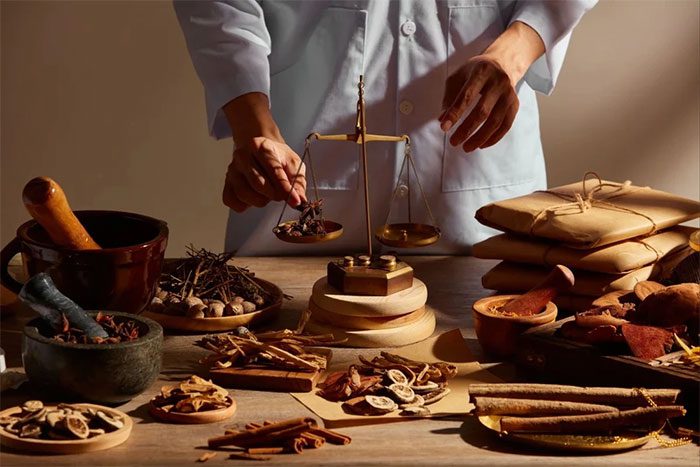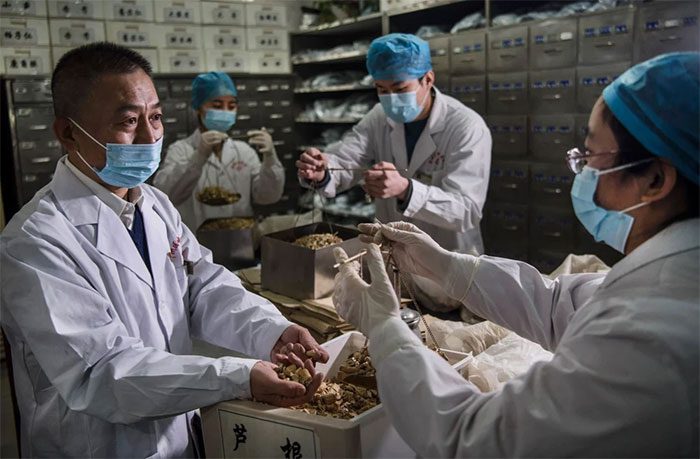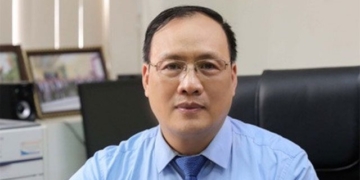Many people claim that Traditional Chinese Medicine (TCM) is pseudoscience. However, a recent study indicates that TCM has a complex foundation based on scientific understanding of proteins.
A group of international researchers stated that these findings clearly show that the 3,000-year-old traditional healing methods of China may share many similarities with modern medicine.

A study on Traditional Chinese Medicine has revealed that it has more connections to modern medicine than previously thought. (Photo: Shutterstock).
In editorials published in the journal Nature, representatives of the mainstream scientific community have repeatedly labeled TCM as mostly pseudoscience based on unsubstantiated theories.
However, an article published on October 28 in the journal Science Advances unveiled a previously unknown medical basis, revealing the hidden scientific foundation of TCM.
Traditional Chinese Medicine is one of the oldest healthcare systems in the world. Historical records show that this practice dates back to the Shang Dynasty (1766 – 1122 BC), a period marked by an economic and industrial boom that produced some of the finest bronze artifacts in history.
The foundation of TCM is based on treating symptoms believed to arise from an imbalance between yin and yang. This system does not have a concept of “disease,” as patients are diagnosed and treated based on their symptoms.
According to the article published in Science Advances, this treatment approach has made it difficult to connect with advanced medical practices. Although TCM is not yet considered a scientifically advanced treatment method, modern medicine has clearly utilized herbs to treat certain illnesses.
Aspirin and morphine are prime examples. These medications are often derived from plants and have been used in traditional medicine long before modern drugs emerged.
In 2015, the Nobel Prize in Physiology or Medicine was awarded to Tu Youyou, a Chinese chemist who discovered an anti-malarial drug derived from a herbal remedy used in traditional medicine.
While individual herbs in traditional medicine have been studied separately and applied clinically, the overall application in practice remains a distant goal, as noted by Science Advances.
Although studies have sought to provide a scientific basis for practical application, the individual research on each herb has created many limitations, making it difficult to predict their interactions with the human body.
As a result, researchers have begun to establish a medical networking system. In this system, they map the proteins related to symptoms and the target chemicals in herbs onto the human protein interaction network.
Proteins related to a symptom tend to cluster together in a network, as both symptoms and diseases rarely occur due to the expression of a single gene but rather through the interaction of multiple genes.

Traditional Chinese Medicine is one of the oldest healthcare systems in the world. (Photo: Xinhua News Agency).
The research team found that the closer the herbal properties are to a group of symptoms, the more likely it is that the herb can treat those symptoms based on a cross-acting mechanism.
For example, the traditional Chinese medicine Yin Chai Hu (or Stellaria root) is recognized for its efficacy in treating fever by the Chinese Pharmacopoeia, a system of traditional and modern medicines reviewed by the Ministry of Health. From a medical perspective, the target of Yin Chai Hu is to treat fever by modulating inflammatory processes.
Gan Xiao, the author of the article in Science Advances and a researcher at Nanjing University of Information Science and Technology, stated that “Traditional medicine and modern medicine may share a common origin in molecular network mechanisms.”
Despite the skepticism that traditional medicine faces from proponents of modern treatment methods, China continues to promote its treatments. In addition to applying modern medicine, China has established centers and schools for traditional medicine around the world.
In 2021, Chinese President Xi Jinping stated that the country has relied on traditional medicine to heal and save lives for thousands of years. He also urged research groups to strive to explain the mechanisms of traditional medicine from the perspective of modern science.


















































